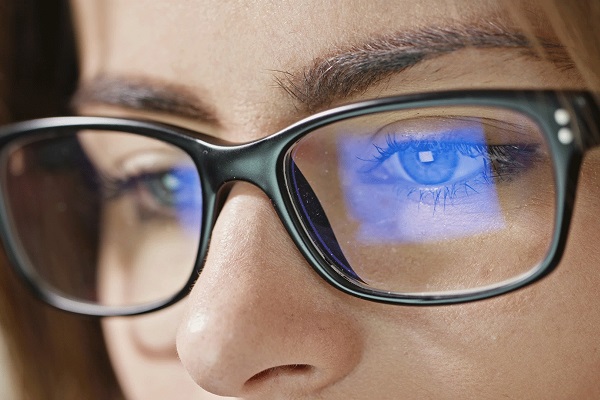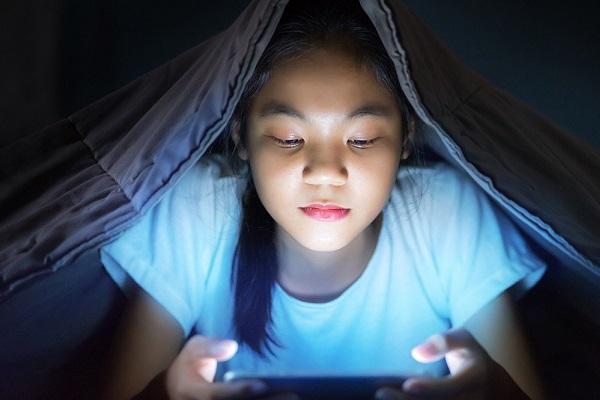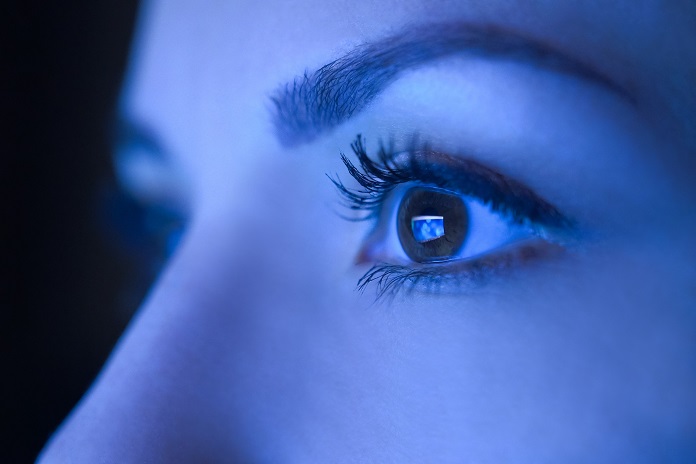Today’s trend is all about blue light and LED lighting as we can see many people use blue light however it gives extra looks to our room because of its vibrant color but did you know that blue light has many bad effects on our eyes? If you don’t know what blue light is, how it affects our eyes and many more then this topic is for you?
Table of Contents
Toggle1. What is Blue Light?
Blue light is part of the visible light spectrum, with wavelengths that range from approximately 380 to 500 nanometers. It is characterized by its high energy and short wavelength, which sets it apart from other colors of visible light. Blue light is emitted by various sources, like sunlight, digital screens, and LED lighting.
Sources of Blue Light
However, there are two different sources of blue light,
- Natural Sources: The primary natural source of blue light is the sun. During daylight hours, blue light is scattered in the atmosphere, which contributes to the blue appearance of the sky. It also plays a role in regulating our circadian rhythms and alertness.
- Artificial Sources: Artificial sources of blue light include LED lighting, fluorescent lights, and digital screens such as computers, tablets, and smartphones. These sources have become prevalent due to their energy efficiency and brightness.
How Blue Light Affects the Eyes
As I have already mentioned above there are many ways which blue light affects our eyes, the blue light affects eyes are listed below:
1. Impact on Visual Comfort
- Digital Eye Strain: Prolonged exposure to screens that emit blue light can lead to digital eye strain. Some of the symptoms include eye discomfort, dryness, irritation, and blurred vision. Also, Blue light contributes to this strain because it scatters more than other wavelengths, making it harder for the eyes to focus. However, this scattering effect can result in increased glare and reduced contrast, which can strain the eyes during extended screen use.
- Accommodation Issues: Blue light can affect the eye’s ability to accommodate, or focus on objects at various distances. Besides this, the eye’s lens and cornea work together to refract light onto the retina, but blue light’s high energy can cause more strain on these focusing mechanisms, leading to visual discomfort and fatigue.

Source: Eye Clinic | Laurier Optical
2. Impact on Sleep Patterns
- Circadian Rhythm Disruption: Blue light affects the circadian rhythm, the body’s internal clock that regulates sleep-wake cycles. Also, did you know that exposure to blue light, especially in the evening, can suppress melatonin production, the hormone responsible for signalling sleep? However, reduced melatonin levels can delay sleep onset, decrease sleep duration, and disrupt overall sleep quality.
- Evening Exposure: The use of devices that emit blue light in the evening—such as smartphones and tablets—can particularly impact sleep. In addition, the brightness and blue light emitted by these devices can trick the brain into thinking it is still daytime, which can interfere with the natural sleep-wake cycle.
3. Potential Retinal Damage
- Oxidative Stress: There is ongoing research into the potential long-term effects of blue light on retinal health. Blue light has higher energy and can penetrate deeper into the eye, reaching the retina. Prolonged exposure to high levels of blue light may contribute to oxidative stress, which could damage retinal cells over time.
- Age-Related Macular Degeneration (AMD): There is concern that blue light might be a risk factor for age-related macular degeneration, a condition that affects the central part of the retina and can lead to vision loss.
Managing Blue Light Exposure
- Use Blue Light Filters: Many devices come with built-in blue light filters or “night mode” settings that reduce the amount of blue light emitted from screens. These settings typically shift the display’s color temperature to warmer tones, reducing blue light exposure, especially during evening hours which might be helpful for you.
- Wear Blue Light Blocking Glasses: Specialized glasses with lenses designed to block blue light can help reduce exposure. However, these glasses filter out a portion of blue light before it enters the eyes, potentially reducing digital eye strain and improving visual comfort.
- Adjust Screen Settings: Lowering the brightness of your screen and increasing text size can help reduce glare and strain. Many operating systems and applications offer customizable settings to optimize screen comfort based on your preferences.
- Adopt the 20-20-20 Rule: To alleviate digital eye strain, follow the 20-20-20 rule: every 20 minutes, take a 20-second break and focus on something 20 feet away. This practice helps relax the eye muscles and reduce the strain caused by prolonged screen use
- Optimize Lighting: Use ambient lighting that reduces glare on screens. Position screens to minimize reflections and glare from windows or overhead lights. Adjust the color temperature of room lighting to warmer tones, especially in the evening to prevent future eye damage.
- Take Regular Breaks: Incorporate regular breaks into your routine to reduce continuous exposure to blue light. Also, engage in activities away from screens, such as taking a walk, reading a book, or practicing relaxation techniques.
- Limit Screen Time Before Bed: Reduce exposure to screens emitting blue light at least one to two hours before bedtime. Engage in relaxing activities that do not involve screens, such as reading a physical book, listening to soothing music, or practicing mindfulness or you can do light exercise, yoga or meditation.
- Maintain a Consistent Sleep Schedule: Make a regular sleep schedule by going to bed and waking up at the same time each day. This helps regulate your circadian rhythm and improves overall sleep quality.
- Routine Eye Exams: Regular eye exams can help monitor and maintain eye health and also can be helpful for you. An optometrist or ophthalmologist can assess your visual needs, check for signs of digital eye strain, and provide recommendations for managing blue light exposure.
- Healthy Habits: Maintain a balanced diet rich in antioxidants, such as vitamins C and E, which can support overall eye health. Staying hydrated and getting adequate rest also contribute to maintaining healthy vision.

Source: Eyecare Plus
The Positive Aspects of Blue Light
However, blue lights only don’t have negative aspects it also has positive aspects, some of the positive aspects are listed below down:
- Enhanced Cognitive Performance: Blue light shown to improve alertness and cognitive performance. Exposure to blue light during the day can enhance concentration, reaction times, and overall mental clarity. This effect is partly why blue light is used in various settings to boost productivity and wakefulness.
- Regulation of Sleep-Wake Cycle: During daylight hours, blue light helps regulate the circadian rhythm by promoting wakefulness and alertness. Exposure to natural sunlight, which contains blue light, supports a healthy sleep-wake cycle and contributes to overall well-being.
- LED Lighting: Blue light is integral to the technology behind LED lighting, which is energy-efficient and provides bright, clear illumination. Also, LEDs have become popular in homes, offices, and public spaces due to their durability and lower energy consumption.
- Medical Uses: Blue light therapy is used in certain medical treatments, such as phototherapy for neonatal jaundice and acne treatment. These therapeutic applications utilize blue light’s specific wavelengths to target and treat various conditions.
Pros and Cons of Blue Light
Here are the pros and cons of the blue light,
| Aspect | Pros | Cons |
| Visual Clarity | Enhances screen visibility and contrast, making details clearer. | Increased glare can cause eye strain and discomfort. |
| Cognitive Function | Improves alertness and cognitive performance during the day. | Excessive exposure may lead to digital eye strain and fatigue. |
| Sleep Regulation | Exposure to natural blue light during the day helps regulate the sleep-wake cycle. | Blue light in the evening can suppress melatonin production, disrupting sleep. |
| Mood and Well-being | Blue light therapy can help treat Seasonal Affective Disorder (SAD) and improve mood | Disruption in circadian rhythms due to evening blue light exposure can affect mood. |
| Energy Efficiency | Blue light is integral to energy-efficient LED lighting and displays. | Prolonged exposure to artificial blue light sources may impact eye health. |
| Retinal Health | Helps maintain alertness and clarity, supporting visual tasks | High-energy blue light may contribute to oxidative stress and potential retinal damage. |

Things need to considered while buying blue light
12. Brand Reputation- Opt for products from reputable brands known for quality and customer service. Established brands are more likely to provide reliable and effective blue light blocking solutions.

Conclusion
Blue light, with its high energy and short wavelength, affects our eyes and overall well-being in various ways. While prolonged exposure to blue light, especially from digital screens, can contribute to digital eye strain and disrupt sleep patterns, it also has benefits such as enhancing alertness and cognitive function.
Managing blue light exposure through practical tips and lifestyle adjustments can help mitigate potential negative effects while allowing us to benefit from its positive aspects.
Adopting strategies to reduce excessive exposure and maintaining regular eye care, we can support both our visual comfort and overall health in today’s light-filled environment.
By staying informed and adopting measures to mitigate potential negative effects, individuals can strike a balance between benefiting from blue light’s positive aspects and protecting their health.
Embracing advancements in technology and incorporating healthy habits into daily routines will contribute to a more balanced approach to blue light exposure in our increasingly digital world.
FAQs
Do blue light blocking glasses really work?
Blue light blocking glasses can be effective in reducing digital eye strain and improving visual comfort by filtering out a portion of blue light.
Can blue light blocking glasses help with sleep?
Yes, blue light blocking glasses can help improve sleep by reducing blue light exposure in the evening. This helps minimize the suppression of melatonin, the hormone that regulates sleep, potentially leading to better sleep quality and easier sleep onset.
Can blue light blocking glasses help with migraines or headaches?
Blue light blocking glasses may help alleviate migraines or headaches related to digital eye strain by reducing glare and improving visual comfort.
Are blue light blocking glasses suitable for children?
Blue light blocking glasses can be suitable for children, especially if they spend long hours in front of screens.
How do I clean and maintain blue light blocking glasses?
Here are tips to clean blue light blocking glasses:
- Use a soft, lint-free cloth to wipe the lenses.
- Apply a gentle lens cleaner specifically designed for eyewear.
- Avoid using harsh chemicals or abrasive materials that can damage the lens coating.
Also, read more about Excessive Daytime Sleepiness – Narcolepsy and Idiopathic Hypersomnia
